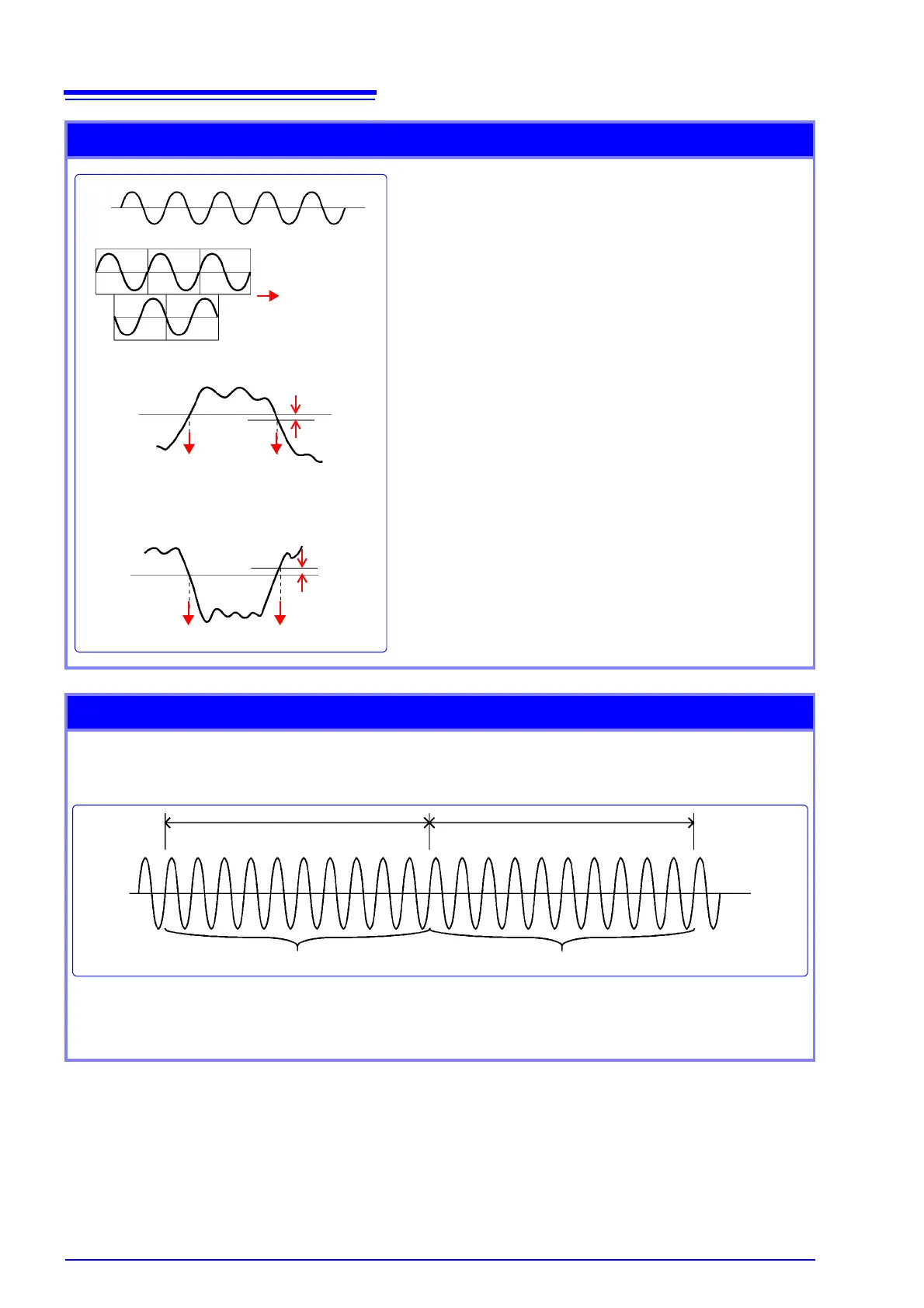Appendix 3 Event Detection Methods
A
8
Voltage Swells, Voltage Dips, and Interruptions
Measurement method:
• When the measurement frequency is set to 50/60 Hz, events
are detected using the RMS voltage refreshed each half-cycle
based on sample data for 1 waveform derived by overlapping
the voltage waveform every half-cycle.
• When the measurement frequency is set to 400 Hz, events are
detected using the RMS voltage refreshed each half-cycle
based on sample data for each waveform.
• Events are detected using line voltage for 3-phase 3-wire con-
nections and phase voltage for 3-phase 4-wire connections.
• Swells are detected when the RMS voltage refreshed each
half-cycle exceeds the threshold in the positive direction, while
dips and interruptions are detected when the RMS voltage
refreshed each half-cycle exceeds the threshold in the nega-
tive direction (hysteresis applies in all cases).
Event IN and OUT:
Event IN : Start of the waveform during which the RMS voltage
refreshed each half-cycle exceeds the threshold in
the positive direction
Event OUT : Start of the waveform during which the RMS voltage
refreshed each half-cycle exceeds the value ob-
tained by subtracting the hysteresis from the thresh-
old in the negative direction
135
24
RMS voltage
refreshed each
half-cycle
Threshold
Swell
Dip, Interruptions
Hysteresis
RMS voltage
refreshed
each half-cy-
cle
RMS voltage
refreshed each
half-cycle
EVENT IN EVENT OUT
Hysteresis
Threshold
EVENT IN EVENT OUT
Frequency
Measurement method:
Frequency is calculated as the reciprocal of the accumulated whole-cycle time during 10, 12, or 80 U1 (ref-
erence channel) cycles. This value is detected when the absolute value is exceeded.
Event IN and OUT:
Event IN : Start of the approx. 200 ms aggregation in which the reading is greater than threshold
Event OUT : Start of the approx. 200 ms aggregation in which the reading returns to (threshold - 0.1 Hz)
Note: Equivalent to 0.1 Hz frequency hysteresis.
Frequency Frequency
Approx. 200 ms aggregation Approx. 200 ms aggregation

